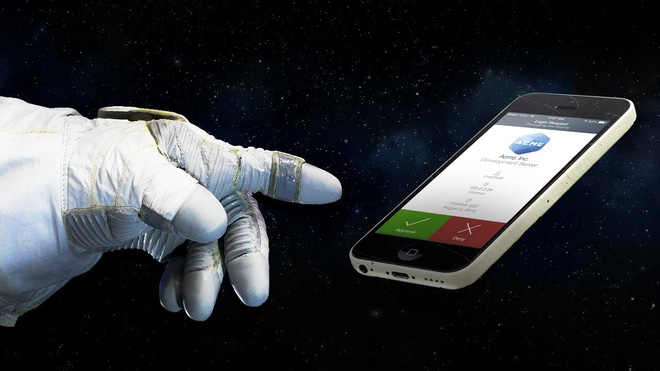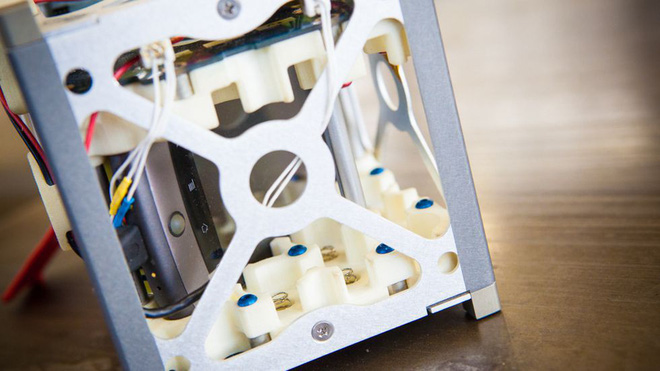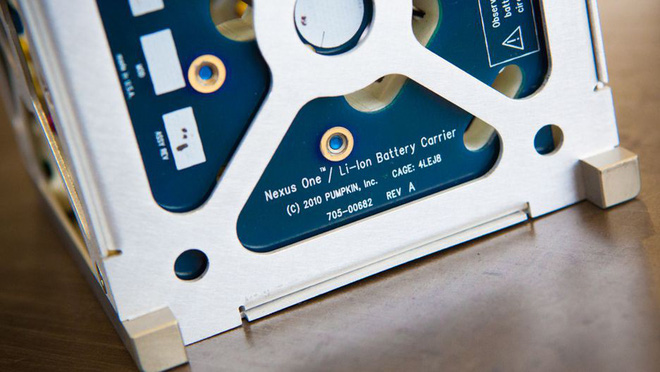Can smartphones work out of space?
- Tram Ho
Aerospace still has many things to discover, smartphones are one of those things.
Thanks to private aerospace companies like Blue Origin, SpaceX and Virgin Galaxy, the door to space is opening up to more people. But whether smartphones and widgets are separate from everyone on Earth today, can they go out to space with their owners?
When not many people on Earth qualify for a review, NASA is probably the most accurate answer to this question when the agency itself has a project to test the performance of smartphones outside the universe.

PhoneSat – project to bring smartphones to space
The project, called PhoneSat, is part of NASA’s Small Spacecraft Technology Program, to create ultra-small, ultra-cheap satellites from smartphones and the Arduino platform that can operate. on the low orbit of the Earth. This project was launched in 2009 at the NASA Ames Research Center.
With the aim of creating super-cheap satellites from smartphones and cheap Arduino-enabled circuit boards on the market, PhoneSat’s initial mission is simple: to survive in a harsh environment in space for a while. identify, and perform a complex task of photographing the Earth and the space and then sending that image back to the ground.

HTC Nexus One with a navigation ball featured in PhoneSat satellite frame
The HTC Nexus One is the device of choice for the first smartphone out-of-space travel. At that time, the 1GHz processor of this smartphone was the fastest processor ever set foot in space.
Not only that, smartphone configuration and features are also very suitable for becoming an outer space satellite. They typically have one to two cameras, a range of accelerometer sensors and rotating sensors, electronic compasses, GPS receivers, radio waves and even Li-Ion batteries that allow independent operation.

Steps to prepare for the trip
To assess the viability of this smartphone in a space environment, a series of tests have been made for this HTC Nexus One. Tests showed that the phone was able to withstand vacuum at a pressure of 0,00029 Pascal (about 1/3400 times the air pressure) and extreme temperatures (from -35 o C to 60 o C).
The smartphone must also pass another harsh test, which is to survive the ejection phase. It was put on a short-range missile and launched at a height of 10km to check. Data from the phone’s accelerometer and magnetometer show that they can overcome the conditions to continue into space.

PhoneSat 1.0 is in the hands of Deputy Prime Minister, Philipp Rösler (left).
Finally, HTC Nexus One also passed the vibration and shock tests according to GEVS standards. But to complete all of PhoneSat’s tasks, the HTC Nexus One still needs some hardware changes.
The device’s default battery has been removed and replaced with 12 Li-Ion batteries that are paired in a 3D printed battery pack. These batteries are not only enough to power the Nexus One, but also satellites within 10 days.
Besides HTC, PhoneSat satellite also has a version of Atmel Atmega 328 Arduino, which controls the phone’s operation and restarts it if it detects it is not working properly.

PhoneSat 1.0 with the antenna sticking out and AA batteries attached inside.
It is worth noting that even though the phone passes tests under extreme conditions, it is clear that it cannot catch cell phone waves when it is above 200 km above sea level. Therefore, NASA has installed the StenSat radio transmitter, to send data to the ground. The StenSat transmitter can send data packets at 1200 bps and has a power consumption of about 1W. In addition to it, it is necessary to have a tape measure properly cut to the length needed to make the antenna.
PhoneSat 2.0
Source : genk
